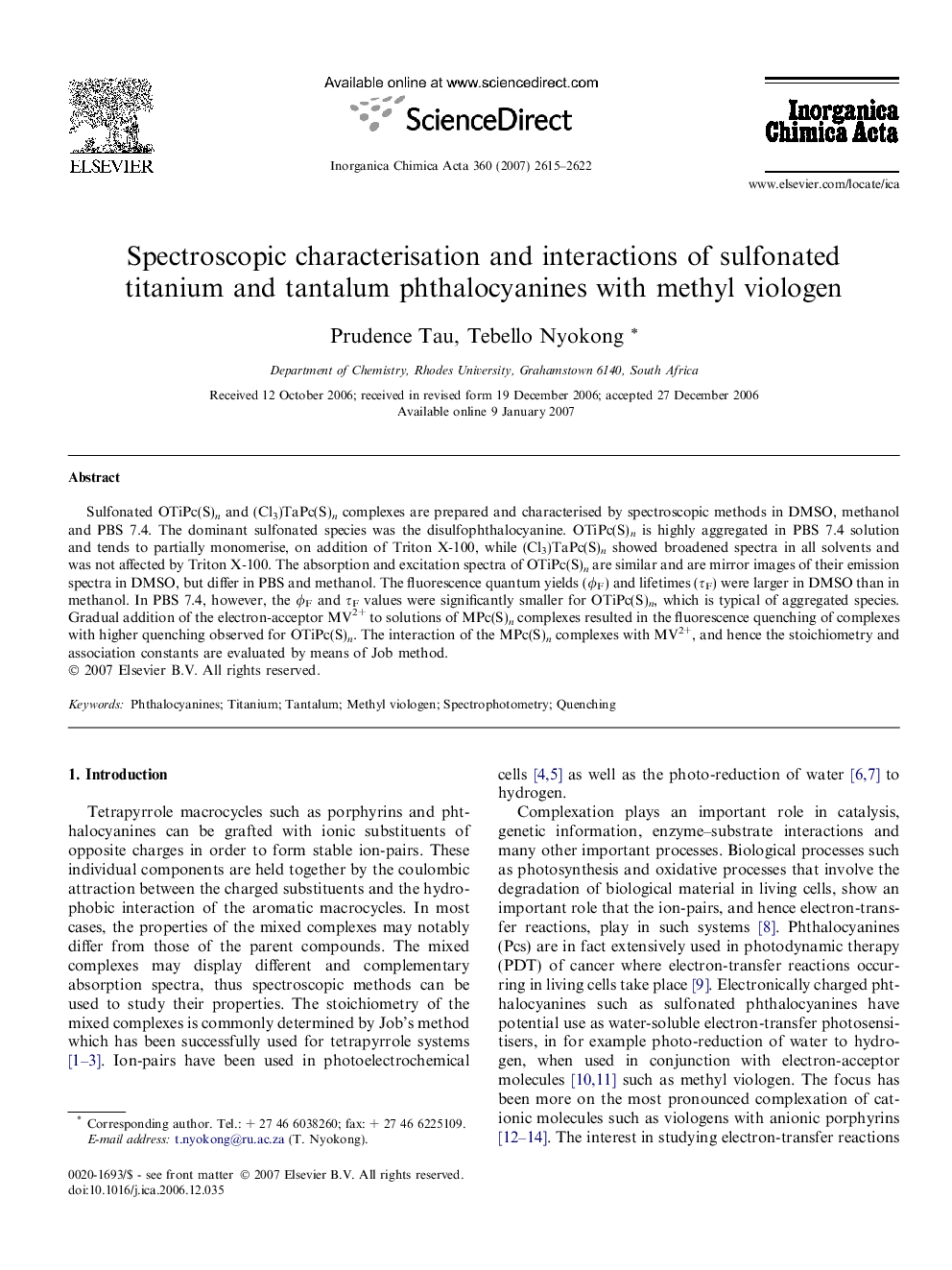| Article ID | Journal | Published Year | Pages | File Type |
|---|---|---|---|---|
| 1309635 | Inorganica Chimica Acta | 2007 | 8 Pages |
Sulfonated OTiPc(S)n and (Cl3)TaPc(S)n complexes are prepared and characterised by spectroscopic methods in DMSO, methanol and PBS 7.4. The dominant sulfonated species was the disulfophthalocyanine. OTiPc(S)n is highly aggregated in PBS 7.4 solution and tends to partially monomerise, on addition of Triton X-100, while (Cl3)TaPc(S)n showed broadened spectra in all solvents and was not affected by Triton X-100. The absorption and excitation spectra of OTiPc(S)n are similar and are mirror images of their emission spectra in DMSO, but differ in PBS and methanol. The fluorescence quantum yields (ϕF) and lifetimes (τF) were larger in DMSO than in methanol. In PBS 7.4, however, the ϕF and τF values were significantly smaller for OTiPc(S)n, which is typical of aggregated species. Gradual addition of the electron-acceptor MV2+ to solutions of MPc(S)n complexes resulted in the fluorescence quenching of complexes with higher quenching observed for OTiPc(S)n. The interaction of the MPc(S)n complexes with MV2+, and hence the stoichiometry and association constants are evaluated by means of Job method.
Graphical abstractThe sulfonated TaPcSmix and TiPcSmix complexes form heterotrimers with methyl violgen and the former showed rarely observed anti-Stokes fluorescence behaviour.Figure optionsDownload full-size imageDownload as PowerPoint slide
